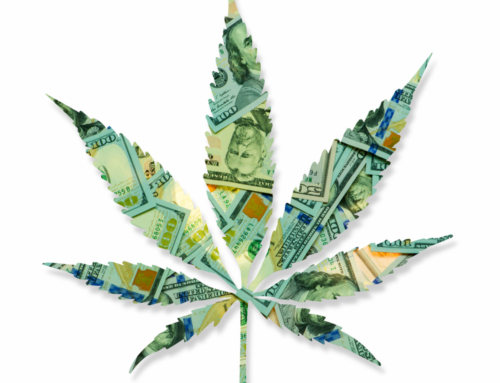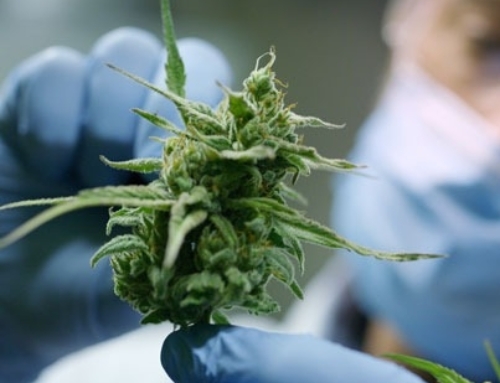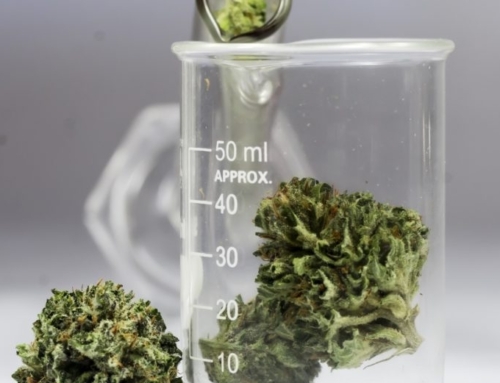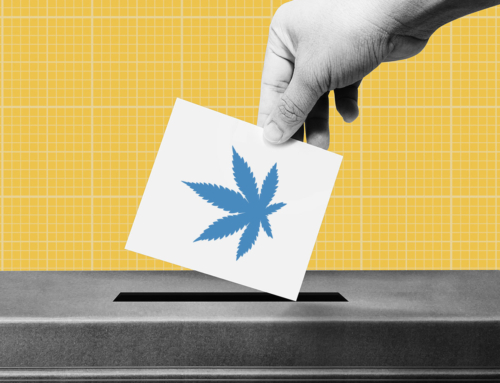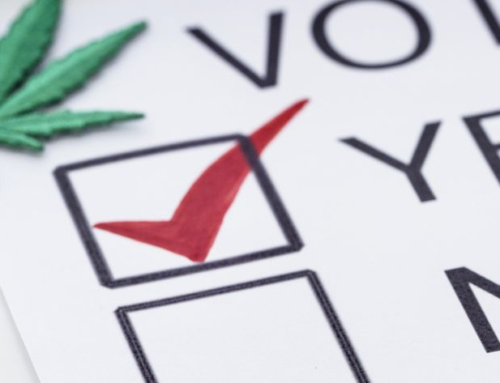Full-Spectrum Phytocannabinoids: A whole-plant holistic approach for maintaining optimal lung health and potentially attenuating the effects of Coronavirus-Induced Disease 2019
Michael D. Steward, M.D.
Endourage, LLC, 2020
Summary
More than a century after the 1918 influenza pandemic, the emergence of the Coronavirus- Induced Disease of 2019 (COVID-19) viral pandemic is shining a light on the complexities of our immune systems. Over the past 100 years, we have learned that it was not just influenza alone that killed more than 50 million people. The virus often triggered a corresponding overreaction of the immune system 1. Similarly, with COVID-19, the severity and outcomes are believed to be related to the characteristics of the host’s immune response 2. Some healthcare experts have postulated that balancing the viral-induced inflammation and resulting pathological levels of inflammatory cytokines may positively influence outcomes. A study of the pathogenesis of Severe Acute Respiratory Syndrome Coronavirus-2 (SARS-CoV-2) pneumonia found that lung damage was induced by an acute severe systemic inflammatory response (a cytokine storm) with the release of pro-inflammatory cytokines, including interleukin-6 (IL-6), and tumor necrosis factor α (TNF-α), leading to elevated immune cell infiltration and macrophagic polarization shifts 3,4,5. Cannabis has been shown to (i) attenuate pathological elevation of critical inflammatory cell signaling pathways of necrosis factor-kappa beta (NF- Kβ), (ii) decrease the resulting elevated proinflammatory cytokine levels (including IL-6, and TNF-α, and (iii) reduce immune cell infiltration of the lung in some studies 6. Therefore, there is substantial evidence to support the potential for novel cannabis therapies attenuating the clinical presentation of COVID-19.
Cannabis Overview
Cannabis is a genus of flowering plants in the family Cannabaceae. It is commonly held that there are three species of the plant: Cannabis sativa, Cannabis indica and Cannabis ruderalis. When referring to the plants from a legal perspective, all three species fall under the category of Cannabis sativa L, which is then further classified into hemp or marijuana based on the tetrahydrocannabinol (THC) content. Cannabis plants contain two primary classes of compounds that have physiological effects: (1) cannabinoids (also referred to as phytocannabinoids) and (2) terpenes (including terpenoids). There are at least 113 known cannabinoids. The most widely recognized are THC, known mainly for the psychoactive effects associated with it, and cannabidiol (CBD). Terpenes are volatile unsaturated hydrocarbons found in the essential oils of many plants (lavender, pine, citrus fruits, etc). They are the compounds that give the cannabis plant its strong fragrance.
Many of the same terpenes derived from hemp have been designated ‘Generally Recognized as Safe’ by the US Food and Drug Administration (FDA) when derived from certain fruit and plant sources, and recognized as safe for use by other international regulatory agencies. In the United States, Cannabis sativa L is further differentiated into two distinct categories based solely on the THC content of the plant. Cannabis sativa L specimens containing more than 0.3% THC by dry weight are classified as “marijuana,” a Schedule 1 drug, and Cannabis sativa L specimens containing no more than 0.3% THC are classified as “hemp”. There is no other distinction between the two varieties of Cannabis sativa L. Hemp plants may contain all of the components of Cannabis sativa L, including THC.
In the research quoted throughout this paper, there may or may not have been a clear distinction between whether the components studied were marijuana or hemp. The research includes all forms of cannabis or its constituents, from isolates to full-spectrum extracts. The bulk of the research suggests that CBD-dominant cannabis was thought to be most effective and there is little reference to THC as a potent anti-inflammatory. In essence, while THC may be helpful in combination with CBD, THC is not the driving factor. Our thesis is that it is the components of the plant that are relevant rather than the legal classification of its source given the similarities of the two. All proposed research would be done exclusively with hemp.
Cannabinoids and terpenes are almost exclusively produced in the flower of the female plant of the species. They are the primary components of a tacky, viscous substance, commonly referred to as “resin,” that is designed to capture airborne pollen from male plants. Unpollinated female plants focus their resources into resin production until they become pollinated, at which time energy is shifted to seed production. Female hemp flowers contain the highest content of cannabinoids and terpenes. A common technique to maximize production of cannabinoids and terpenes is to cultivate females exclusively in the absence of male plants. Male plants and the sticks, stems, seeds, and non-flower leaves of the female plant contain little to no cannabinoids, nor do they contain the cannabis-specific terpenes typically desired from the plant. Virgin female hemp flower is considered the most desirable for full-spectrum extracts.
There are three primary categories of extracts derived from the cannabis plant (“cannabis extracts”): (1) “isolate” extracts, which are isolated compounds containing singular cannabinoids; (2) “broad-spectrum” extracts, which often contain one or more cannabinoids and/or terpenes but no detectable amounts of THC; (3) “full-spectrum” extracts, which includes all of the cannabinoids and terpenes found in the female flower of the plant (this applies to THC products as well). Isolated CBD is perhaps the most well-known cannabis extract. Per the Medication Guide published on the Epidolex website and approved by the FDA, Epidiolex is “nearly 100% cannabidiol” and it is the only listed active ingredient. All 99% pure CBD isolate extracts are chemically equivalent to the active ingredient in Epidiolex; there are no other active ingredients in the drug. What is highly differentiated among seemingly similar cannabis extracts, such as isolates, full spectrum or broad spectrum, is their diversity of cannabinoids and terpenes, and their method of manufacture. Outside of the FDA-regulated drug Epidiolex, there are no federally regulated or approved drugs derived directly from the cannabis plant.
Cannabis, the Endocannabinoid System, and the Entourage Effect
Single molecule synthesis has become the dominant method for pharmaceutical development over the last century, as seen by the development of Epidiolex. Compared to multi-molecules like the ones seen in full-spectrum extracts, the single molecule approach provides for easier production because less research is needed to study interactions and meet regulatory compliance. While botanical medicines have historically been the dominant therapeutic treatment in recorded history, they typically contain combinations of both active and inactive molecules which makes utilizing them in a pharmaceutical setting more challenging unless one is able to identify and isolate a specific key active ingredient. Leading cannabis researchers postulate that a single molecule extract, such as CBD isolate, has the potential to be “too pure” and can actually reduce synergistic potential 7. Synergy is the ability of two or more bodies to interact cooperatively and produce a combined effect greater than the sum of their separate effects. It is a phenomenon that has long been observed in botanical medicine. The concept of botanical synergy within cannabis has now been demonstrated by research that shows the contribution of minor cannabinoids to the plant’s overall pharmacological effects. All mammals possess an endocannabinoid system (ECS) responsible for maintaining homeostasis, the body’s balanced state of equilibrium. The ECS is made up of various components such as receptors, CB1 and CB2, ligands which include all endogenous cannabinoids (cannabinoids produced in the body), and enzymes. Multiple cannabinoids will bind to receptors in varying quantities and stimulate receptors with varying results. While it may be more simple to study single cannabinoids, such as in traditional pharmaceutical models, all the “magic” of botanical synergy occurs when receptors are stimulated by multiple cannabinoids; meanwhile, the terpenes regulate other systems in the body. This synergy is highest when using full-spectrum cannabis preparations 7. Although the molecular mechanisms are complex and not fully understood by researchers, this synergistic, cross-system stimulation has demonstrated the greatest medicinal impact 7. Unfortunately, federal regulations prohibit research from thoroughly investigating these mechanisms and effects in humans.
Cannabis Safety References
Cannabis has a long history of medicinal use in humans and animals. Despite decades of purportedly illicit use, according to the Drug Enforcement Agency’s 2020 Resource Guide there have never been any reported deaths as a direct result of marijuana use Additionally, according to the National Institute on Drug Abuse (NIDA), a government agency that handles drug use and addiction, there has never been an adult death attributable solely to marijuana. As a result of the passage of the 2018 U.S. Farm Bill, “hemp” and all of its derivatives (including CBD) became legal under federal law. Hemp, and hemp-derived CBD, are considered legal food additives and supplements in the state of Colorado. Cannabidiol, as cannabis extract in the form of CBD isolate, is the active ingredient in the FDA-approved drug Epidiolex, which the U.S. Drug Enforcement Administration (DEA) de-scheduled April 2020. That means it is no longer a controlled substance under the Controlled Substances Act (CSA). Descheduling a substance indicates there is a limited potential for abuse, that there are established medical uses, and that it has been proven safe relative to other substances. Epidiolex has nine major drug interactions that are currently known, and it should not be paired with these medications: buprenorphine, leflunomide, levomethadyl acetate, lomitapide, mipomersen, pexidartinib, propoxyphene, sodium oxybate, and teriflunomide.
SARS-Coronaviruses and Inflammation
Cases of acute respiratory syndrome caused by SARS-CoV-2 have exploded across the globe. The viral disease has been classified by the World Health Organization (WHO) as a pandemic. SARS-CoV-2 is a virus characterized by Coronavirus-induced Disease of 2019 (COVID-19), a viral infection accompanied by coughing, sneezing, fever, pneumonia, and mild to severe respiratory complications, sometimes resulting in death. Theories hold that COVID-19 causes excessive fatalistic immune responses within the host such as Acute Respiratory Distress Syndrome (ARDS), Cytokine-Release Syndrome (CRS), and/or Macrophage-Activation Syndrome (MAS) 8.
The virus that causes COVID-19 — SARS-CoV-2 — is 70% genetically identical to Severe Acute Respiratory Syndrome Coronavirus-1 (SARS-CoV-1), a related virus responsible for the Severe Acute Respiratory Syndrome disease (SARS) that resulted in 774 deaths in 17 countries from 2002 to 2003. Both belong to the Coronavidae, or “crown family,” which describes single- stranded, positive sense RNA genome viruses. Although it is too soon to know the exact pathological mechanism of COVID-19, observation of COVID-19 patients’ physiology, as well as significant genetic similarities between the two viruses, supports the assumption that molecular mechanics between SARS-CoV-1 and SARS-CoV-2 are similar, although their zoonotic (animal to human transmission) origins may differ.
Both viruses preferentially infect the lungs and gastrointestinal tract. Studies of SARS-CoV-1 show the virus uses membrane-incorporated “spike” glycoprotein interactions with human angiotensin-converting enzyme 2 (ACE2) for cellular attachment and entry 9. Mechanistically, this results in the upregulation of the NF-Kβ inflammatory signaling pathway, which (i) increases pro-inflammatory cytokine levels (TNF-α, IL-6, cyclooxygenase-2 [COX-2]); (ii) enhances immune cell infiltration into the lungs (in part due to increased levels of Monocyte Chemoattractant Protein 1 [MCP-1]); and raises levels of macrophagic polarity, shifting from the healing M2 phenotype to the proinflammatory M1 phenotype 5.
This combination of inflammatory mechanisms and the resulting cytokine storm culminates in acute lung injury, pneumonia, and potential pulmonary failure. Several studies of SARS-CoV-1 have noted the capacity for viral N and spike proteins to upregulate NF-Kβ gene expression 10. Mice infected with genetically modified SARS-CoV-1 that lacked the ability to upregulate NF- Kβ demonstrated increased survival, decreased immune cell infiltration in lungs, and decreased inflammatory cytokines (TNF-α, IL-6). Application of NF-Kβ inhibitors in mouse models also increased survival following unmodified SARS-CoV-1 infection and reduced inflammation and lung pathology 11.
SARS-CoV-1 activation of NF-Kβ pathways results in elevated proinflammatory cytokines (TNF-α, IL-6, MCP-1) 11. SARS-CoV-1 proteins have also been shown to upregulate COX-2, which is responsible for prostaglandin production and increased inflammatory response 12. Prolonged elevation of these cytokines leads to acute lung injury and serious respiratory complications. Studies of SARS-CoVID-1 infection have shown an important shift in macrophage polarization from the healing, anti-inflammatory M2 phenotype (produces IL-4, IL-10) to the proinflammatory M1 phenotype (produces IL-6, IL-16, TNF-α)13. Both phenotypes increase NF- Kβ inflammatory signaling and increase M1 macrophages, which elevate MCP-1 levels and contribute to increased infiltration of immune cells (mast cells, neutrophils, and macrophages, among others) into the lungs, which further intensifies the pro-inflammatory environment.
Effective treatments still under development include prophylactic vaccines, chloroquine, angiotensin II receptor type I inhibitors (losartan, candesartan), as well as various targeted anti- inflammatories (tocilizumab, an IL-6 inhibitor). There are a limited number of antiviral pharmaceutical treatments currently being tested including remdesivir, ritonavir, and lopinavir. The high mortality rate associated with COVID-19 is not thought to be a result of the virus, but rather the body’s immune response to the viral infection. Thus, there is an urgent need for better- suited clinical treatments that target the body’s excessive inflammatory immune response.
Full-Spectrum Phytocannabinoids May Help Maintain Lung Health and Minimize the Effects of COVID-19
Researchers in China have identified IL-6 as a main driver of immune response overreaction in COVID-19 patients and have included elevated IL-6 levels as a biomarker of the disease worsening. Full-spectrum phytocannabinoids have been shown to significantly lower important inflammatory and metabolic disease measures, including IL-6 levels and TNF-α 6.
When examining lung inflammation and COVID-19, it is important to note that cannabis and phytocannabinoids have been shown to significantly decrease NF-Kβ pathway signaling both in vitro and in vivo 6. Reduction of NF-Kβ signaling leads to decreased levels of the inflammatory cytokines that become elevated in cases of COVID-19. Indeed, cannabis has been shown to reduce TNF-α and it possesses anti-inflammatory effects equivalent to those of a corticosteroid, but without the adverse effects 14. Corticosteroids are generally seen as the gold standard of anti- inflammatory compounds but have been contraindicated in cases of COVID-19 15. Cannabis, however, does not carry the same unwanted side effects and has also been shown to significantly decrease other important mediators of inflammation in animal models including IL-6, interleukin-1 beta (IL-1β), COX-2, C-Regulated Proteins (CRP), prostaglandin-E2 (PGE-2), inducible nitric oxide synthase (iNOS), and nitric oxide (NO) 6.
This association between infection and progression of disease with inflammation suggests a strategy that would partner anti-infective agents, such as antivirals and vaccines, with anti- inflammatory agents. This partnership may be effective in minimizing effects of the disease. An anti-inflammatory agent would be expected to mitigate symptoms including fever, pain, and swelling. Furthermore, an anti-inflammatory regimen initiated at a relatively early stage in disease progression might be expected to stem the immune over-response and to slow or even prevent progression of symptoms leading to lung injury and ARDS. Importantly, an appropriate anti-inflammatory intervention should not result in abnormal immune suppression, but should instead target healthy immune homeostasis. Cannabis has been shown to reduce inflammatory cell infiltration (neutrophils, eosinophils, and macrophages) in a lung model of inflammation, while helping to balance the endocannabinoid system and reduce inflammation and lung pathology 14.
Conclusion: Phytocannabinoids as Both a Possible Preventative Immune Health and Intervening COVID-19 Symptomatic Strategy
In summary, distinctive formulations rich in specific cannabinoids and terpenes of full-spectrum hemp extracts may have the potential to provide a safe, effective, anti-inflammatory compound to assist in healthy lung function maintenance, and to decrease COVID-19 associated pulmonary pathophysiology, by: (i) reducing NF-Kβ pathway activation, (ii) decreasing inflammatory cytokine production, and (iii) attenuating immune cell infiltration.
Exceedingly high levels of cytokines (IL-1, IL-6, IL-8, IL-10, TNF-α, and CRP) result in overt inflammatory symptoms that include mild to severe respiratory disease, high fever, and cough. In progressed disease, this “cytokine storm” will circulate throughout the body to trigger a surge of active immune cells into the lungs, resulting in acute lung injury and acute respiratory distress syndrome (ARDS). This may be particularly severe in immunocompromised subjects such as the elderly, diabetics, and those with cardiovascular disease.
This association between infection and progression of disease with inflammation suggests a strategy that would partner anti-infective agents, such as antivirals and vaccines, with anti- inflammatory agents. An anti-inflammatory agent would be expected to mitigate symptoms
including fever, pain, and swelling. Furthermore, an anti-inflammatory regimen initiated at a relatively early stage in disease progression might be expected to stem the immune over- response, and to slow or even prevent progression of symptoms leading to lung injury and ARDS. Importantly, an appropriate anti-inflammatory intervention should not result in abnormal immune suppression, but should target healthy immune homeostasis.
In the search for the most efficacious treatment with the fewest legal vexations, it would be logical to utilize full-spectrum cannabis extracts derived from federally legal hemp rather than marijuana given the legal differences and botanical similarities.
References
- Watanabe, T., & Kawaoka, Y. (2011). Pathogenesis of the 1918 Pandemic Influenza Virus. PLoS Pathogens, 7(1). doi:10.1371/journal.ppat.1001218
- X. Li, M. Geng, Y. Peng, L. Meng, S. Lu, Molecular immune pathogenesis and diagnosis of COVID-19, Journal of Pharmaceutical Analysis (2020), doi: https://doi.org/10.1016/ j.jpha.2020.03.001.
- Okabayashi, Tamaki, et al. “Cytokine Regulation in SARS Coronavirus Infection Compared to Other Respiratory Virus Infections.” Journal of Medical Virology, vol. 78, no. 4, 2006, pp. 417–424., sci-hub.si/10.1002/jmv.20556.
- Wang, Wei, et al. “Up-Regulation of IL-6 and TNF-α Induced by SARS-Coronavirus Spike Protein in Murine Macrophages via NF-ΚB Pathway.” Virus Research, vol. 128, no. 1-2, 2007, pp. 1–8., doi:10.1016/j.virusres.2007.02.007.
- Yoshikawa, Tomoki, et al. Severe Acute Respiratory Syndrome (SARS) Coronavirus- Induced Lung Epithelial Cytokines Exacerbate SARS Pathogenesis by Modulating Intrinsic Functions of Monocyte-Derived Macrophages and Dendritic Cells. Apr. 2009, www.ncbi.nlm.nih.gov/pmc/articles/PMC2655569/.
- Kozela, Ewa, et al. “Cannabinoids Δ9-Tetrahydrocannabinol and Cannabidiol Differentially Inhibit the Lipopolysaccharide-Activated NF-ΚB and Interferon-β/STAT Proinflammatory Pathways in BV-2 Microglial Cells.” Journal of Biological Chemistry, vol. 285, no. 3, 2009, pp. 1616–1626., doi:10.1074/jbc.m109.069294.
- Russo, E. B. (2019). The Case for the Entourage Effect and Conventional Breeding of Clinical Cannabis: No “Strain,” No Gain. Frontiers in Plant Science, 9. doi:10.3389/fpls.2018.01969
- Rothan, Hussin A, and Siddappa N Byrareddy. The Epidemiology and Pathogenesis of Coronavirus Disease (COVID-19) Outbreak. May 2020, www.ncbi.nlm.nih.gov/pubmed/32113704.
- Gurwitz, David. “Angiotensin Receptor Blockers as Tentative SARS‐CoV‐2 Therapeutics.” Drug Development Research, Apr. 2020, doi:10.1002/ddr.21656.
- Liao, Qing-Jiao, et al. “Activation of NF-KappaB by the Full-Length Nucleocapsid Protein of the SARS Coronavirus.” Acta Biochimica Et Biophysica Sinica, vol. 37, no. 9, 2005, pp. 607–612., doi:10.1111/j.1745-7270.2005.00082.x.
- DeDiego, Marta L, et al. Inhibition of NF-ΚB-Mediated Inflammation in Severe Acute Respiratory Syndrome Coronavirus-Infected Mice Increases Survival. Jan. 2014, www.ncbi.nlm.nih.gov/pmc/articles/PMC3911641/.
- Liu, Mo, et al. Amino Acids 1 to 422 of the Spike Protein of SARS … 12 Dec. 2005, link.springer.com/10.1007/s11262-005-0070-4.
- Li, Wei, et al. Activation of Interleukin-32 pro-Inflammatory Pathway in Response to Influenza A Virus Infection. 16 Apr. 2008, www.ncbi.nlm.nih.gov/pmc/articles/PMC2288676/.
- Nichols, James M., and Barbara L.f. Kaplan. “Immune Responses Regulated by Cannabidiol.” Cannabis and Cannabinoid Research, vol. 5, no. 1, 2020, pp. 12–31., doi:10.1089/can.2018.0073.
- Russell, Beth, et al. “COVID-19 and Treatment with NSAIDs and Corticosteroids: Should We Be Limiting Their Use in the Clinical Setting?” Ecancermedicalscience, vol. 14, 2020, doi:10.3332/ecancer.2020.1023.


